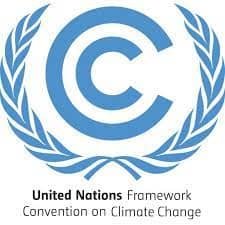UN Biodiversity Conference - COP15 in Montréal: Context
United Nations’ Conference of the Parties (COP) Conventions
In preparation for the upcoming COP15 Montreal UN Convention on Biological Diversity, Cool Boulder would like to provide context regarding the three UN Conference of the Parties conventions that are critical to addressing the global threats of climate change, biodiversity loss, and desertification trends.
Although the UN Framework Convention on Climate Change is the most well-known, with the recent COP27 climate conference taking place last month, all three are critical to stabilizing our climate and protecting essential life sustaining systems. The conventions include the UNFCCC, the Convention on Biological Diversity (CBD), and the UN Convention to Combat Desertification (UNCCD). These conventions meet at summits called Conferences of the Parties (COP), and are sometimes referred to as the three sister “Rio Conventions”, as they were a direct result of the 1992 Rio Earth Summit in Brazil. All three are essential to addressing the environmental crises that our planet faces, and are intrinsically linked to each other.
UN Climate Conference: COP27 in Egypt
The UNFCCC is certainly the most well-known and best publicized of the three UN conventions, and recently wrapped up the 27th session of the Conference of the Parties of the UNFCCC, also known as COP27. COP27 was hosted by the Government of the Arab Republic of Egypt, and after two weeks of programs and over 50 events, the attendees worked to address the adaptation gap and strengthening resilience, increasing finances for climate action, accelerating action, and building credibility and trust. (UNFCCC: List of COP27 Outcomes) Leaders at COP27, “supported and delivered a wide range of actions, announcements, and events across mitigation, adaptation finance and equity, with a clear focus on implementation. This included the launch of the African Cities Water Adaptation Fund, an African-led insurance commitment to provide cover for up to USD 14 billion in climate losses, and the Sharm-El-Sheik Adaptation Agenda in partnership with the COP27 Presidency.” (UNFCCC: Press Release)
UN Biodiversity Conference: COP15 in Montréal
While COP27 focused on the climate crisis, the 15th meeting of the Conference of the Parties to the CBD, or COP 15, will focus on the biodiversity crisis and is taking place in Montréal, Canada. COP15 will be the, “biggest biodiversity conference in a decade with countries hoping to strike a deal on protecting and restoring nature.” (Zurich: What is COP15 and how does it differ to COP27?)
However, there is a growing understanding that climate change and biodiversity loss are inherently linked and must be addressed together. At the previous UN climate conference, COP26 in Glasgow, world leaders signed a “Pledge for Nature”, which focused on reversing biodiversity loss and ecosystem degradation, while highlighting how biodiversity loss accelerates climate change by disrupting nature’s ability to capture and store carbon. The link between climate change and biodiversity loss highlights the urgent need for aligned global action, and the importance of the UNFCCC and CBD conferences. The success of CBD and COP15 is critical to both protecting global biodiversity, stabilizing the climate, and sustaining life on Earth.
Biological diversity, “is essentially the life support system for humanity. From our oceans to our forests, nature underpins the world’s food system; provides fresh water; sustains the quality of the air and soils; regulates the climate; provides pollination and pest control; absorbs carbon emissions and reduces the impact of natural hazards. But harm too many of these ecosystems and we risk endangering their ability to provide basic life support services.” (Zurich: What is COP15 and how does it differ to COP27?)
However, irresponsible land and resource management has been harming our natural systems at unprecedented rates, with biodiversity loss faster now than at any other time in human history. COP15 will hope to address this crisis and support the millions of species that face extinction by aiming to implement a globally agreed framework to live in harmony with nature, called the “Post-2020 Global Biodiversity Framework”. This Framework will outline actions for countries to halt and reverse damages to global biodiversity, with the draft text including a pledge to protect at least 30% of Earth’s lands and seas by 2023, particularly those areas with high importance for biodiversity. “There are also 21 action-orientated targets that need to be achieved by 2030. They cover a wide range of topics from expanding protected areas and reducing pollution, to ensuring that food production is sustainable and eliminating plastic pollution.” (Zurich: What is COP15 and how does it differ to COP27?)
Want to Read More about COP 27 in Egypt, COP15 in Montréal, or the Importance of Biodiversity and its Connection to Climate?
See below for more resources!
Biodiversity needs same protection as climate, say scientists, activists at COP27
CBC: Radio-Canada
The Government of Canada
‘Paris Agreement’ for nature imperative at COP15, architects of climate deal say
The Guardian, Environment
COP15: Your Guide to the 2022 UN Biodiversity Conference
The Nature Conservancy
Canada is hosting the largest biodiversity conference in the world. Here’s what is at stake
The Narwhal
CBD COP15: Why the World will be Watching Montreal this December
World Wildlife Foundation
Montreal to host delayed COP15 summit to halt ‘alarming’ global biodiversity loss
The Guardian, Environment
What’s the UN Biodiversity Conference (COP15) and why is it important for nature?
World Economic Forum
Q&A: What is COP15 and why should investors care?
Schroders
Global Youth Diversity Network
Note - This is a longer read, though provides in-depth information on the Convention on Biological Diversity
Scientists warn deal to save biodiversity is in jeopardy
Nature
‘The warning lights are flashing.’ Report finds nations failing to protect biodiversity
Science
‘Apocalypse Papers’: Scientists Call for Paradigm Shift as Biodiversity Loss Worsens
Inside Climate News
Scientists call for solving climate and biodiversity crises together
Mongabay News
Our Response to Climate Change is Missing Something Big, Scientists Say
The New York Times, Climate


